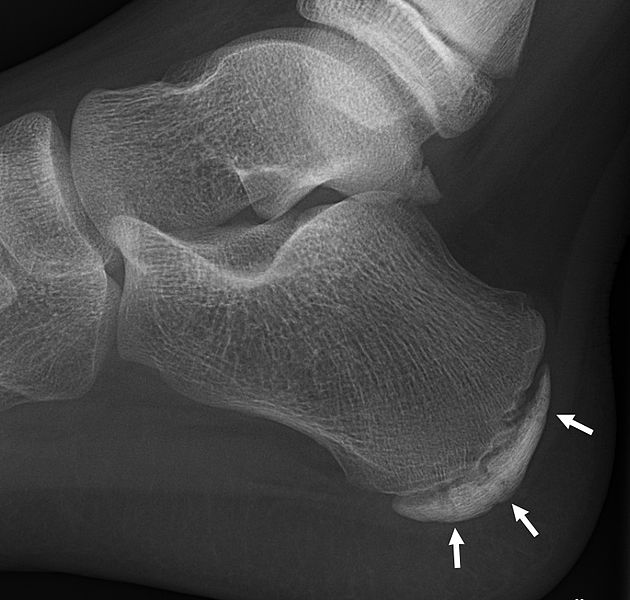Playlist
Show Playlist
Hide Playlist
Ankle and Foot Pain: Management
-
Slides FootandAnkle AcuteCare.pdf
-
Download Lecture Overview
00:01 Talking about management now for ankle sprains in particular, one of the keys, and I think this could come up on your examination, would be early mobilization with range of motion exercises. 00:12 Of course, ice is important. 00:14 Compression. 00:15 We know that a more serious brace, either an Air-Stirrup or a lace-up brace provides superior results to just wearing an elastic compression sleeve alone. 00:25 So, that’s something to consider. 00:27 For ankle sprains in particular, acetaminophen is about as effective as NSAIDs and probably safer. 00:33 And then, certainly think about physiotherapy, particularly for that patient with a second or even third ankle sprain. 00:39 They definitely need to start working on preventing the next episode of ankle sprain because it’s most likely to come. 00:46 Therefore, some muscle strengthening and stretching as well. 00:52 In those other conditions, talking about management, Achilles tendinitis, workouts that involve hills – so going up hills, using stairs or interval workouts where they take a rest and they go again makes that tendinitis worse. 01:05 So, those should be avoided. 01:07 For physical therapy, strengthening of the calf musculature is important to help strengthen and protect that Achilles tendon. 01:15 For peroneal tendinitis, which also produces something of a more lateral type of ankle pain, there’s evidence that lateral heel wedges and ankle taping don't necessarily help healing. 01:27 But a strong commitment to physical therapy, with range of motion and strengthening, can help these patients. 01:33 And then eventually, some of these patients might actually need surgical repair as well. 01:39 And so, let's look at plantar fasciitis. 01:42 The good news is, as common as it is, most patients do fine with just conservative treatment only. 01:48 So, that includes stretching on a routine basis. 01:50 I recommend it at least twice a day. 01:52 Deep myofascial massage to work out that stretching and inflammation. 01:58 Analgesics can be effective for the short term. 02:01 And then using an ice massage is helpful as well. 02:05 In terms of next steps of therapy for plantar fasciitis, I often will recommend just simple orthotics to try to take some of the pressure off the plantar fascia. 02:16 Doesn't have to be something custom, at least at first for straightforward cases. 02:21 I recommend over-the-counter because they are so much cheaper. 02:24 And still highly effective. 02:26 For those patients who break through, that 10% who don't do well in conservative therapy, it’s time to consider injection therapy. 02:32 It’s usually fanned out over three anatomical sites in the plantar fascia. 02:37 It is superior in research to be better than dry needling or just lidocaine by itself. 02:44 There is some risk, though, with these injections of plantar fascia rupture, which is a devastating condition. 02:50 And I should mention here as well that you never inject the Achilles tendinitis because of the risk of rupture of the Achilles tendon. 02:58 And then finally, for severe cases of plantar fasciitis, think about extracorporeal shockwave therapy and some of these patients need to go to surgery as well. 03:09 So, with that, I’d say that we have a bunch of different conditions that can affect the foot and ankle. 03:15 A good examination and a history as to where the location of that pain is and how much it affects our function is key. 03:24 Ottawa ankle rules for avoiding unnecessary use of x-ray also key. 03:29 And therapy tends to involve conservative treatment for the majority of these conditions at first. 03:35 But think about getting physical therapy involved probably sooner rather later for these conditions as well, particularly if there's a chance for recurrence. 03:42 Thanks very much.
About the Lecture
The lecture Ankle and Foot Pain: Management by Charles Vega, MD is from the course Acute Care.
Included Quiz Questions
A 36-year-old woman presents to your office with 2 weeks of foot pain. She does not recall any acute injury. She goes for a 4-mile run around her neighborhood everyday after work. The pain is worse in the mornings, but not worse with activity. On physical examination, she is tender to palpation over the medial plantar surface of the foot during dorsiflexion of the toes. What is the next best step in management?
- Stretching exercises
- X-ray
- Prescribe orthotics
- Injection of triamcinolone
- Opiates
Which of the following is the most appropriate management of chronic midportion Achilles tendinopathy?
- Eccentric calf strengthening
- Rest
- Surgical repair
- Injection of triamcinolone
- Lateral heel wedges
A 14-year-old girl presents with acute ankle pain after rolling her ankle during a soccer game. This is her second ankle injury this season. She was immediately unable to bear weight, has swelling over the joint, and is tenderness to palpation at the tip of the lateral malleolus. Which of the following should NOT be included in the management of this patient?
- Urgent referral to orthopedic surgery
- Early mobilization
- Ice and elevation
- Ankle brace
- Radiograph
Customer reviews
5,0 of 5 stars
| 5 Stars |
|
5 |
| 4 Stars |
|
0 |
| 3 Stars |
|
0 |
| 2 Stars |
|
0 |
| 1 Star |
|
0 |




